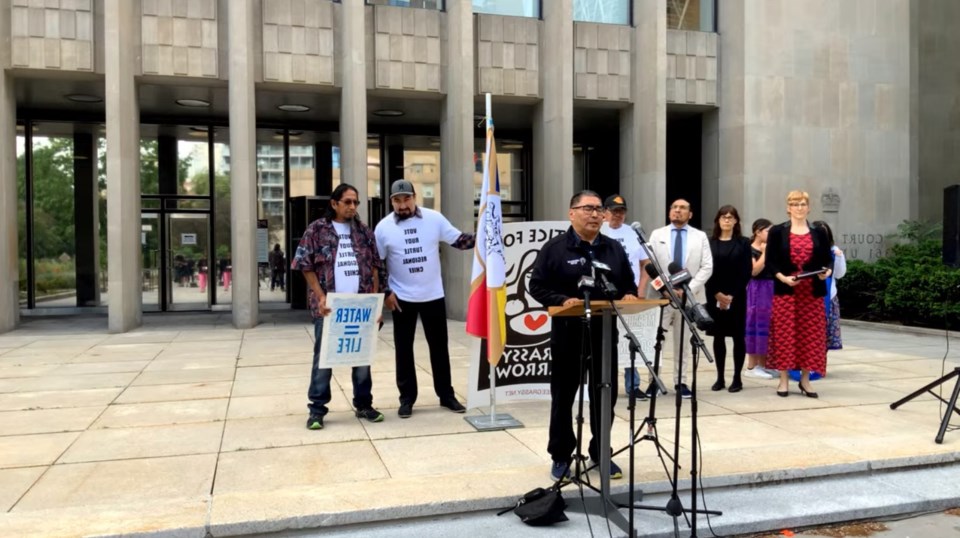GRASSY NARROWS – More than 50 years into its struggle with mercury poisoning, this First Nation is suing the governments of Canada and Ontario for alleged failure to protect its treaty rights.
Grassy Narrows (Asubpeeschoseewagong) First Nation announced its lawsuit Tuesday morning in a news conference in front of the Superior Court of Justice building in Toronto shortly after filing its statement of claim.
A lawyer for the Anishinaabe community northeast of Kenora said in the news conference that the Crown is guilty of “neglect and denial.”
The 30-page statement of claim asks the court to declare that the provincial and federal governments have breached their Treaty 3 duties by failing to protect Grassy Narrows from pollutants and “the cumulative impacts of Industry and Land Use.”
The document seeks to have Ottawa and Ontario prohibited “from authorizing, undertaking, or permitting the continuation of” industrial activity that contaminates the First Nation’s land and waters.
“Our economy has been destroyed. Our way of life has been destroyed,” Grassy Narrows Chief Rudy Turtle told reporters.
Clear-cut logging, mining and a proposed nuclear waste repository that could be built upstream from Grassy Narrows were all mentioned in the news conference, but the focus was on mercury contamination from a paper mill.
The English-Wabigoon river system was contaminated in the 1960s and ’70s when a mill in Dryden discharged tonnes of mercury into the water.
Mercury contamination entered the food chain and accumulated in the fish eaten by Grassy Narrows members.
A public health catastrophe followed. Many people in the community were diagnosed with Minamata disease, a neurological disorder with symptoms including numbness in hands and feet, muscle weakness, damage to hearing and problems in muscle control.
The mill stopped discharging mercury into the river decades ago, but a recent study has found that sulfate and organic matter released from the mill stimulate the formation of highly toxic methylmercury from the mercury that still lingers.
A spokesperson for Dryden Fibre Canada, the mill’s owner since August 2023, said in an email to Newswatch on May 24 that they “care deeply about these matters” but “we only received a copy of these observations (on May 23) and we will review them carefully before commenting further.”
Adrienne Telford, one of the lawyers representing Grassy Narrows in the lawsuit, told reporters “this mill needs to stop polluting.”
Regarding Tuesday's statement of claim and news conference, the company spokesperson responded by email: "We operate in compliance with extensive environmental regulatory requirements. Regarding this morning's announcement by Grassy Narrows, we have not yet seen the filing and will not be commenting."
“For over 50 years, the Crown has failed to protect the people of Grassy Narrows and their territory from industrial contamination and poisoning,” Telford said at Tuesday’s news conference.
She said there is no dollar amount for how much the First Nation seeks in compensation but any compensation should reflect the needs of Grassy Narrows as “a community in crisis.”
The allegations made in the statement of claim have not been tested in court.
